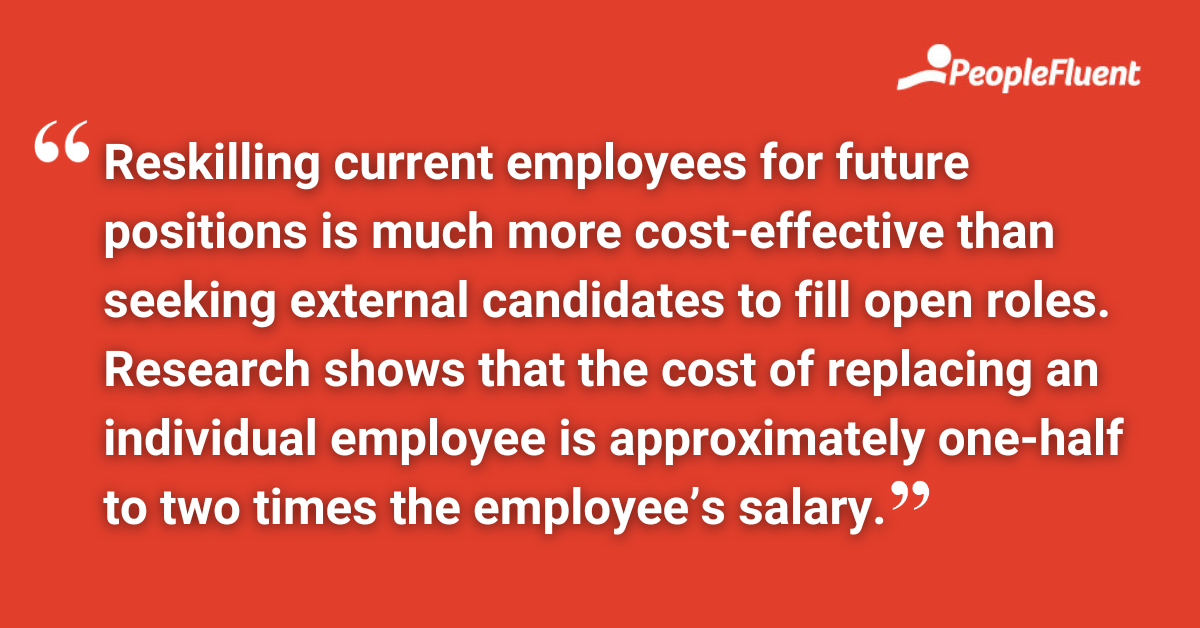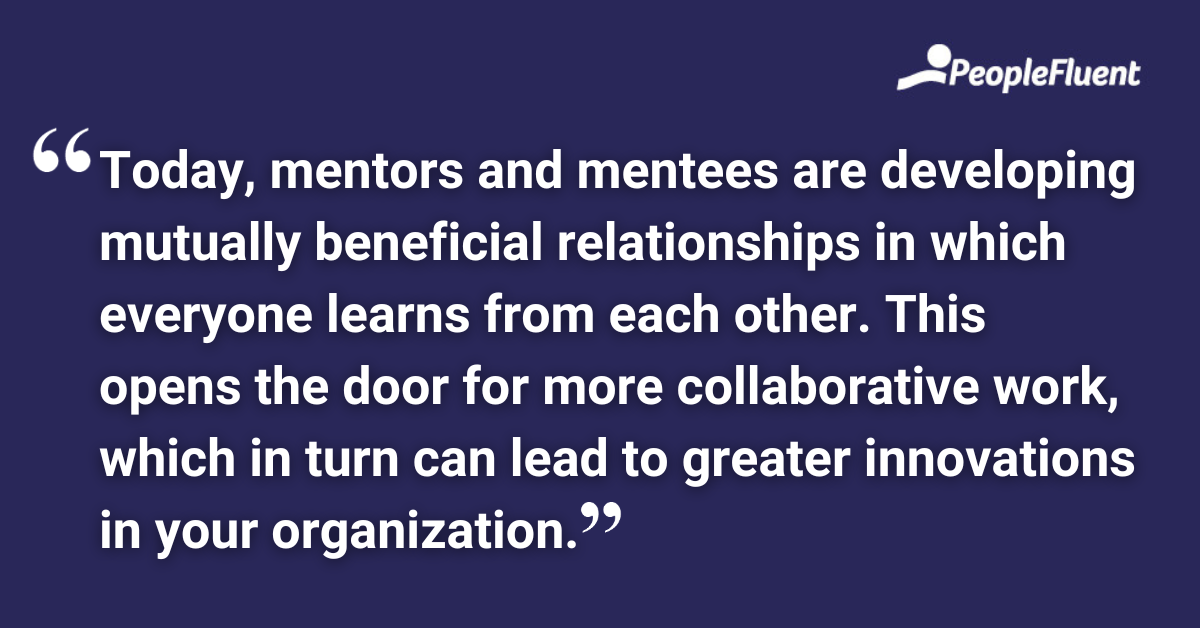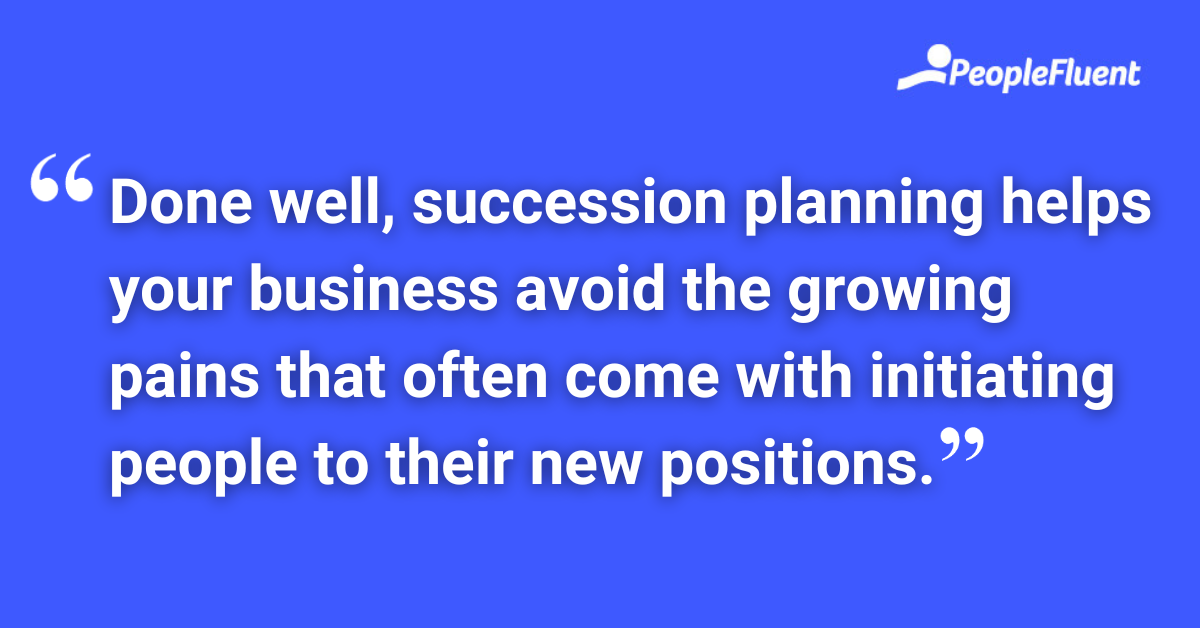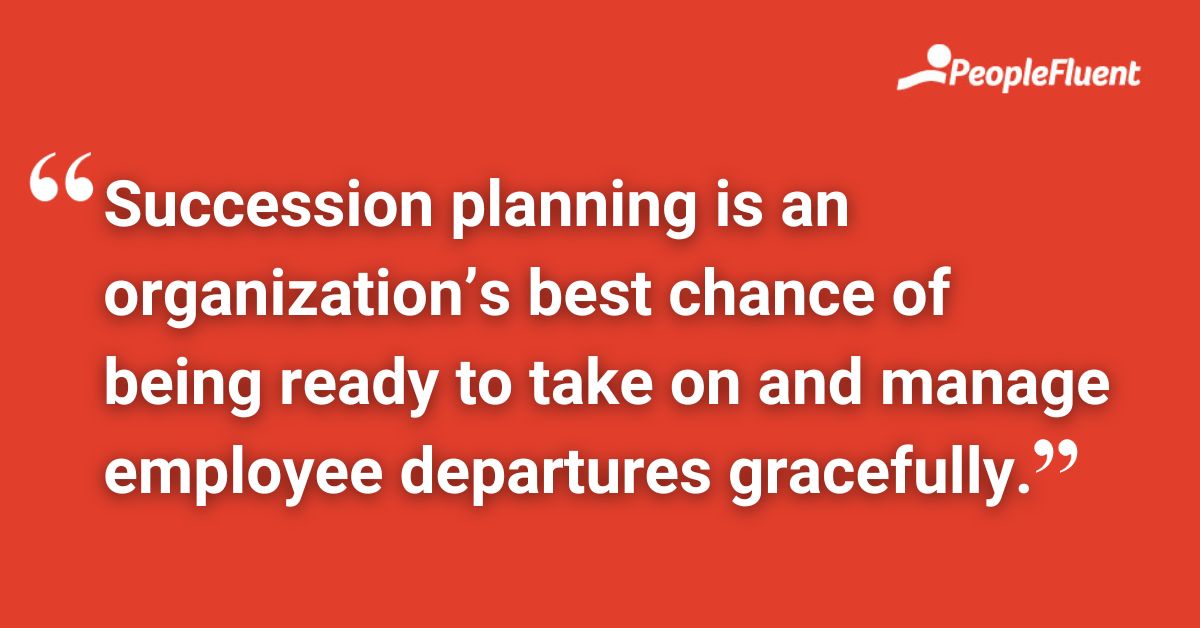Published: Aug 24, 2022Time to read: 7mins Category: Talent Management
5 Advantages to Succession Planning That Secure Your Organization’s Future
Do you know the future leaders of your organization? Whether your business is in its infancy or has been around for decades, it’s imperative that you consider how things will be handled when people move on to other ventures. If you’re relying on one person to understand the intricate systems of a department, then it could be a gut punch to your organization when that person retires or resigns. That’s where succession planning comes in.
Succession planning does more than help HR leaders and managers avoid future frustrations that can come along when people leave the business. We’ve outlined five of the best advantages of having a succession planning process.
1) Discover the Skills You Already Have
The individuals in your organization represent a nearly limitless pool of potential. Each person’s unique background means there are likely to be skills within the organization that are going unrecognized. Luckily, succession planning allows HR leaders and managers to discover these skills and put them to good use.
That’s especially important when you consider that employees who feel like they’re being under-utilized are 10 times more likely to look for a new job compared to those who don’t feel this way. There are many external factors that contribute to people leaving their organizations. You wouldn’t want to inadvertently encourage anyone’s departure by not recognizing their skills.

JUST FOR YOU | ‘How Succession Planning Can Future-Proof Your Organization for the “Great Retirement”’
2) Improve Your Culture Through Growth and Development
Once you’ve discovered the many skills and potential of the talent in your workforce, you can use that knowledge to bolster morale and keep your business running efficiently. Employee trend data from your succession planning software shows you which employees are likely to be the best fit for leadership development. Harnessing this knowledge will help you ensure that your leadership roles will continue to be filled by the most qualified people in your organization.
You’ll also have the added benefit of supporting internal growth and professional development. According to Glassdoor research, “taking a proactive approach to your employee growth and professional development strategies…can mitigate employee turnover and drive more productivity.” This makes sense since most employees want to develop within their roles and grow throughout their careers.
Employees who feel they can’t grow will start looking for work elsewhere.
In 2021, 63% of people who left their jobs cited lack of growth as a top reason for leaving. When people are leaving your organization because they feel they’re stuck or stagnant in their careers, that contributes to a negative work culture.
Succession planning allows you to provide targeted skills development for your employees, giving them a sense of purpose and reinforcing the message that your organization cares about its people growing and achieving their career goals.

MORE FROM THE BLOG | ‘5 Questions That Get to the Heart of Why People Analytics Matters’
3) Reduce Business Expenses
At the end of the day, you need the right people in the right places to get things done efficiently and effectively. Succession planning helps you discover who those people are and get them ready for where they’ll fit best within your organization down the line.
Like everything else, succession planning will come with a cost. In addition to choosing the right software to meet your needs, you’ll need to invest in some training for your HR teams and managers so they can get acclimated to the system. From there, you’ll need to set aside time on a regular basis to revisit your plan. It will be an ongoing process, so you’ll need to budget accordingly.
Even so, your business will get a better return on its investment with succession planning than without it. Reskilling current employees for future positions is much more cost effective than seeking external candidates to fill open roles. Research shows that the cost of replacing an individual employee is approximately one-half to two times the employee’s salary. That means replacing just one employee whose salary was $75,000 could cost your organization $150,000. Multiply that by the rising number of people leaving their jobs right now, and businesses could see themselves spending much more to replace talent—if they aren’t already.
Conversely, the average cost to reskill current employees for other roles is $24,000 per worker—a significant difference! From a budget perspective, investing in succession planning is a smart business move. While you’ll incur some costs from having the software, you can prevent a lot of turnover, saving your organization a vast sum overall.

KEEP READING | ‘6 Foundations for Effective Succession Planning’
4) Foster and Encourage Innovation
Once you’ve identified potential successors for roles within your organization, you can begin the process of preparing these individuals for an eventual transition. An important aspect of this process is to provide mentorship opportunities. Mentoring is another way to boost morale and grow your company culture. It’s also a great way for employees to hone their skills.
When potential successors are encouraged to work on projects alongside the people currently occupying those prospective roles, those successors earn critical real-world experience that they can later apply to the positions themselves. More seasoned employees can serve as sounding boards for individuals who aren’t as familiar with the role. Conversely, less seasoned employees may bring a fresh perspective to a problem or task that had otherwise gone unnoticed.
Mentorship no longer looks like senior-level employees imparting their knowledge upon junior-level associates. Today, mentors and mentees are developing mutually beneficial relationships in which everyone learns from each other. This opens the door for more collaborative work, which in turn can lead to greater innovations in your organization.

HANDPICKED FOR YOU | ‘Growing Skills & Retaining People: How to Successfully Mentor in the Workplace’
5) Manage Change Successfully
Done well, succession planning helps your business avoid the growing pains that often come with initiating people to their new positions. After all, when someone leaves your organization, they don’t just leave with their personal items. They’re also taking institutional knowledge that, in some cases, has been developed over the span of decades. This can be anything from subject matter expertise to existing professional relationships or accounts, critical management processes, and so on.
These things typically can’t be quickly passed along to the next individual to occupy the role. As such, you want to be very intentional with your succession planning. Long-term succession planning should lead to a nearly seamless transfer of institutional knowledge from the exiting employee to their successor.
It’s impossible to predict everything, and there will surely be an adjustment period when someone new takes over. That said, thorough planning can often mitigate these challenges. Your employees will spend less time in the adjustment period and will be able to get back to their full productive capacity quicker when they’ve been properly mentored and prepared for a new role within the organization, as opposed to someone entering with little knowledge of your company’s inner workings.

Secure Your Future With Strong Planning
None of us have a crystal ball to say when someone’s leaving or who that person will be, but we do know that change is inevitable.
Succession planning is an organization’s best chance of being ready to take on and manage employee departures gracefully. Not only that, but it’s a chance for organizations to show their workforces that they’re committed to improving company culture by investing in those who work tirelessly to make the business prosper. You really can’t go wrong with a strong succession plan.
DOWNLOAD THE PRODUCT SHEET | ‘PeopleFluent Large Enterprise Succession Product Sheet’
Learn How to Get Started With Succession Planning
Download our ebook, The Importance of Succession Planning: 6 Ways to Safeguard Your Organization by Preparing for the Future, and learn how to start securing your organization’s future. Or request a demo to experience succession planning yourself!